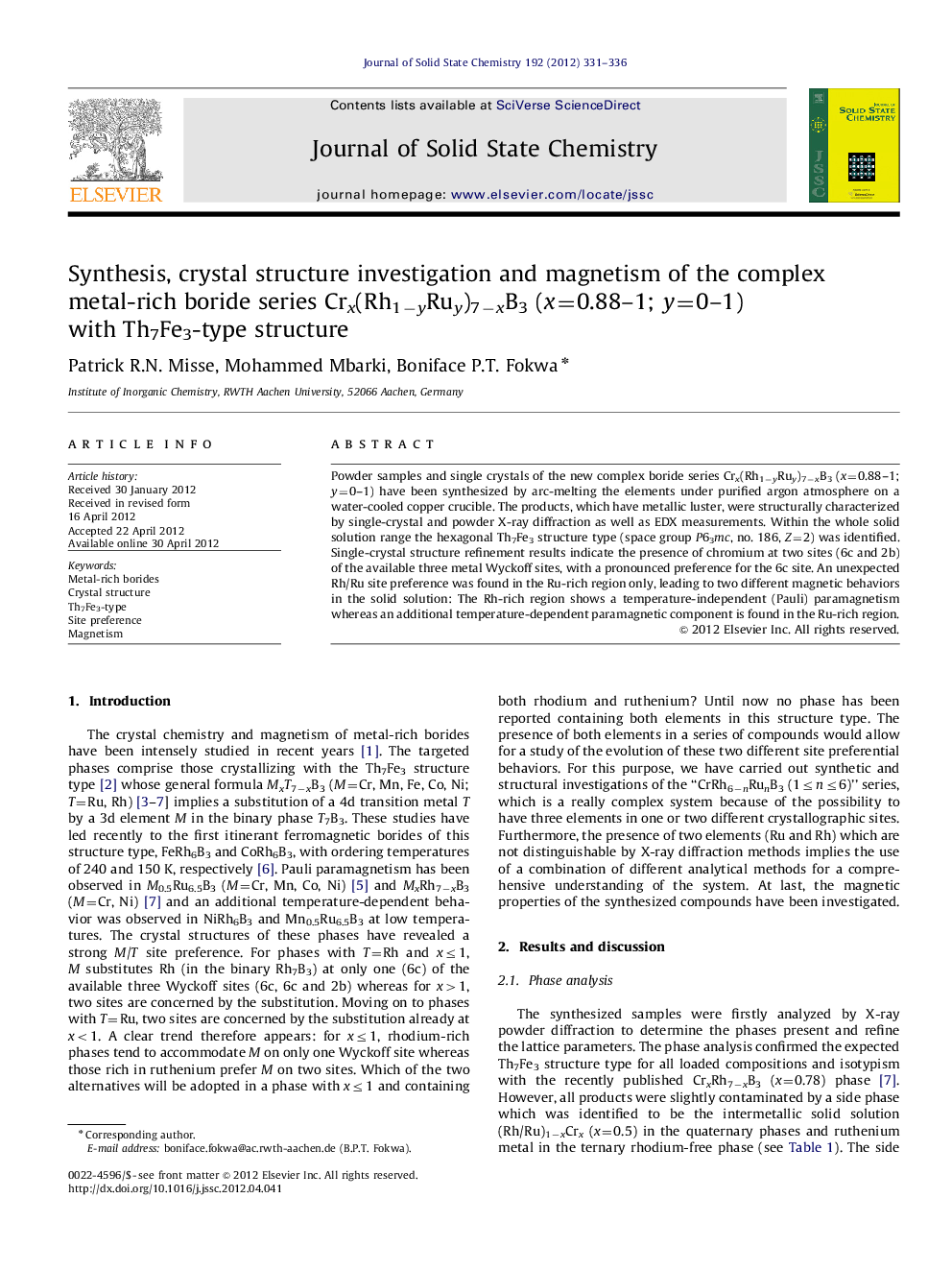| Article ID | Journal | Published Year | Pages | File Type |
|---|---|---|---|---|
| 1330502 | Journal of Solid State Chemistry | 2012 | 6 Pages |
Powder samples and single crystals of the new complex boride series Crx(Rh1−yRuy)7−xB3 (x=0.88–1; y=0–1) have been synthesized by arc-melting the elements under purified argon atmosphere on a water-cooled copper crucible. The products, which have metallic luster, were structurally characterized by single-crystal and powder X-ray diffraction as well as EDX measurements. Within the whole solid solution range the hexagonal Th7Fe3 structure type (space group P63mc, no. 186, Z=2) was identified. Single-crystal structure refinement results indicate the presence of chromium at two sites (6c and 2b) of the available three metal Wyckoff sites, with a pronounced preference for the 6c site. An unexpected Rh/Ru site preference was found in the Ru-rich region only, leading to two different magnetic behaviors in the solid solution: The Rh-rich region shows a temperature-independent (Pauli) paramagnetism whereas an additional temperature-dependent paramagnetic component is found in the Ru-rich region.
Graphical abstractThe new complex boride series Crx(Rh1−yRuy)7−xB3 (x=0.88−1; y=0−1) has been synthesized by arc melting the elements under purified argon atmosphere. Beside the 3d/4d site preference within the whole solid solution, an unexpected Rh/Ru site preference was found in the Ru-rich region only, leading to two different magnetic behaviors: The Rh-rich region shows a temperature-independent (Pauli) paramagnetism whereas an additional temperature-dependent paramagnetic component is found in the Ru-rich region.Figure optionsDownload full-size imageDownload as PowerPoint slideHighlights► Synthesis of a new boride series fulfilling Vegard´s rule. ► 3d/4d site preference. ► Unexpected Ru/Rh site preference. ► Rh-rich region is Pauli paramagnetic. ► Ru-rich region is Pauli and temperature-dependent paramagnetic.
